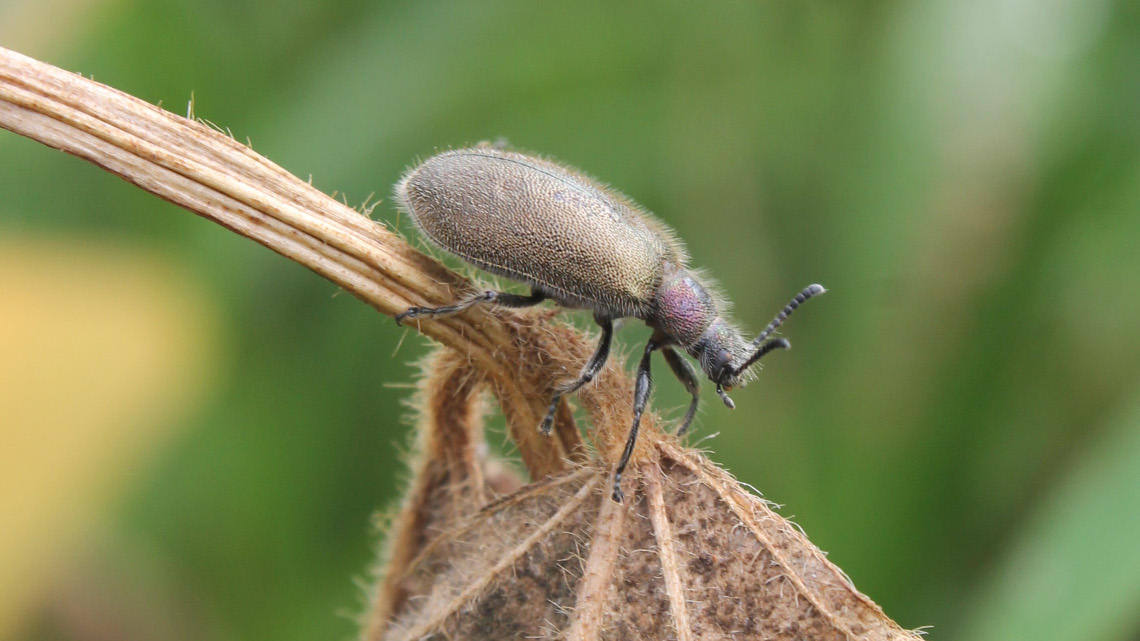Jumping genes protect beetle eggs
Bacteria protect the eggs of the wool beetle from fungal attack. According to Mainz researchers, the bacteria obtained the mechanism through natural gene transfer - possibly even from marine organisms.

Better together – this applies in particular to many creatures that form symbioses with microbes in order to tap new food sources or protect their offspring. The same goes for the wool beetle Lagria villosa. This beetle is colonised by several strains of closely related Burkholderia gladioli bacteria, which protect the beetle's eggs from fungal attack. An international research team led by scientists from the Johannes Gutenberg University Mainz (JGU) and the Leibniz Institute for Natural Product Research and Infection Biology in Jena has now discovered that at least one strain of the beetle's symbiont bacteria releases a fungus-repellent, i.e. antifungal substance that is surprisingly similar to the antifungal compound of sea squirts living in the sea.
Strongly protected despite a small genome
L. villosa actually comes from Africa and migrated to South America. In Brazil, the beetle has become a dreaded plague for farmers. As biotechnologists from Mainz report in the scientific journal "Nature Communications", the special antimycotic protection of eggs by symbiotic bacteria is probably due to the transfer of genes between unrelated microorganisms. However, the genome of these particularly protective bacteria is relatively small overall. "A reduction of the genome often occurs in bacteria that have been living in close symbiosis with their host for a long time," explains Laura Flórez from the Institute of Organismic and Molecular Evolutionary Biology at JGU.
Antimycotic agent resembles substances of marine organisms
Of the various bacterial strains that protect the wool beetle eggs, one was particularly active and protective: the strain B. gladioli Lv-StB. The researchers investigated the egg-protective substances and found an antifungal substance that they named lagriamide: "It is striking that lagriamide is very similar to substances already found in the sea and probably produced by microbial symbionts of sea squirts," explains Kirstin Scherlach, biochemist from Jena.
Jumping genes enable protective mechanism
But how did the genetic information of a marine organism get into the symbiont bacterium? In order to answer this question, Jason Kwan and his team at the University of Wisconsin in Madison, USA, analysed the genomes of the microbial beetle community and identified the genes underlying the production of lagriamide. Remarkably, the responsible genes are all located very close to each other on a genomic island. This suggests that this gene segment was "subsequently" integrated into the genome of the symbiont by lateral gene transfer.
Although so-called jumping genes are known in microbiology, they can rarely be directly linked to a functional gain such as the antimycotic potential of bacteria.


